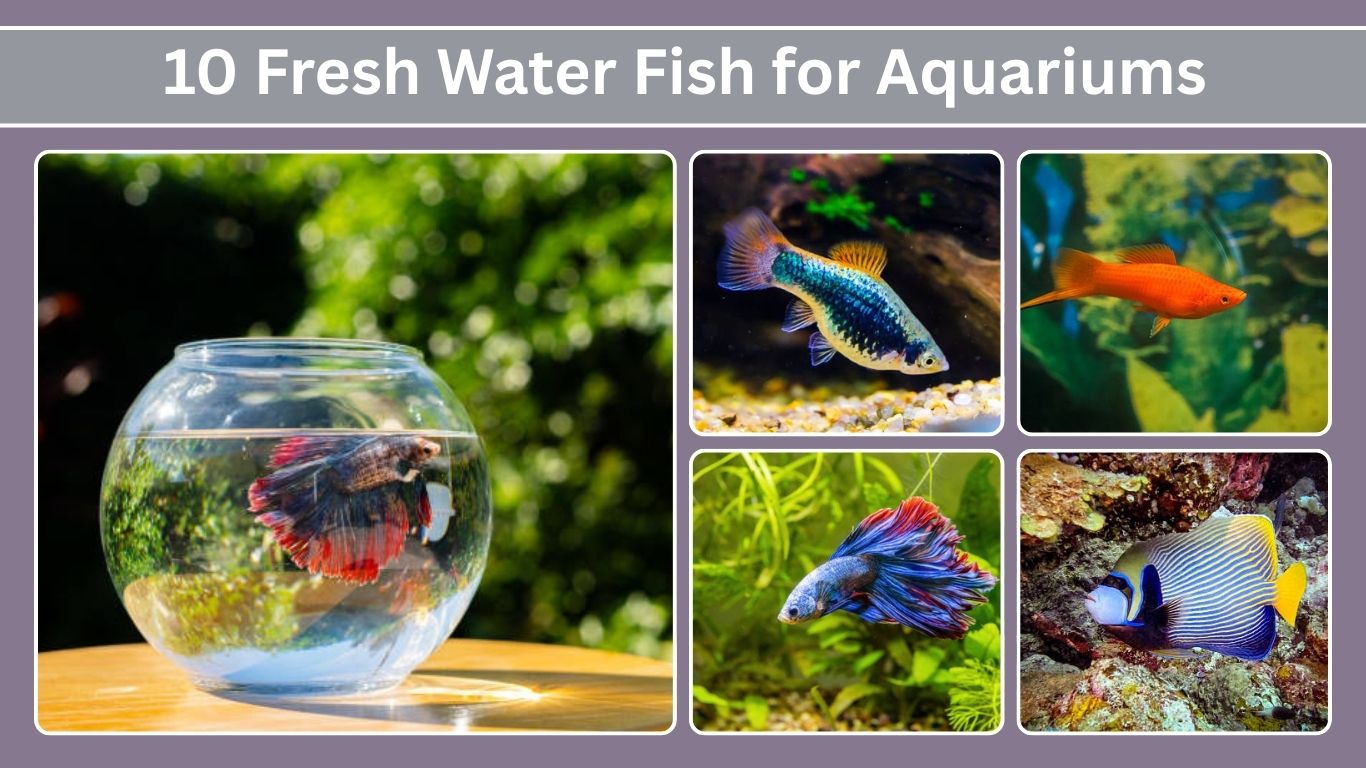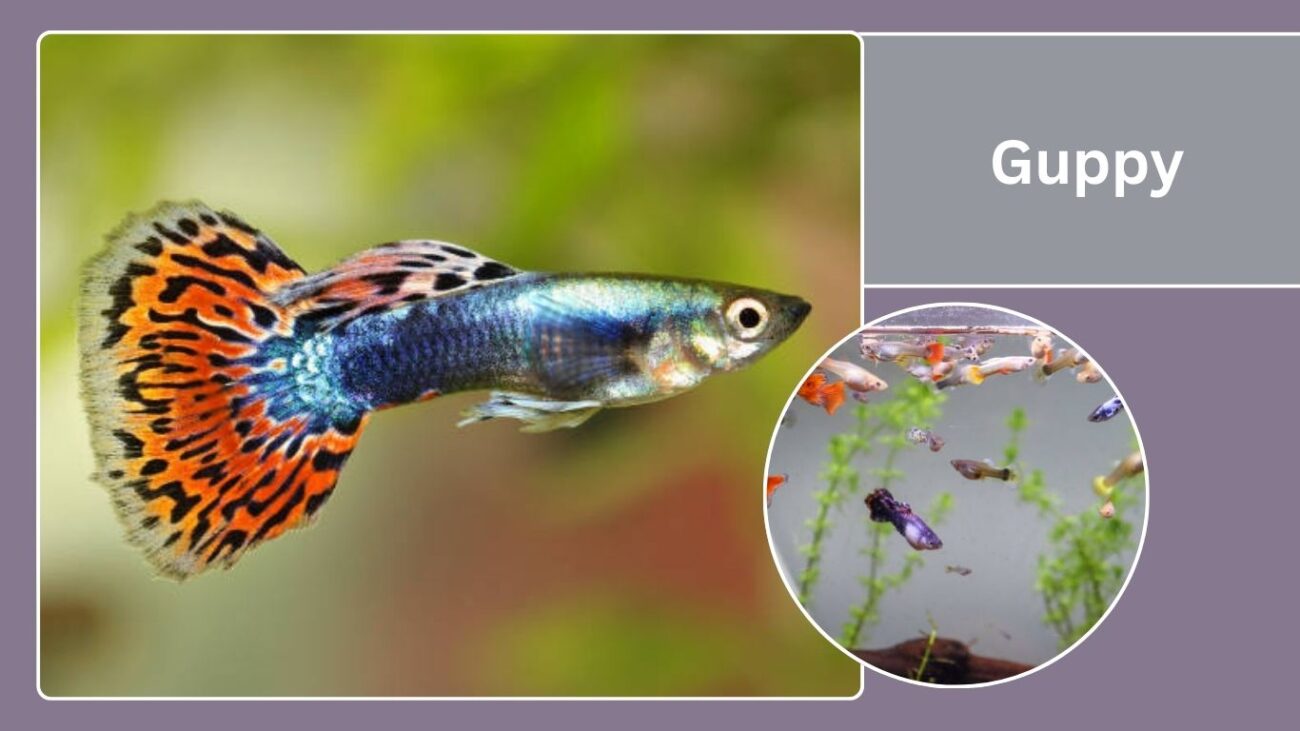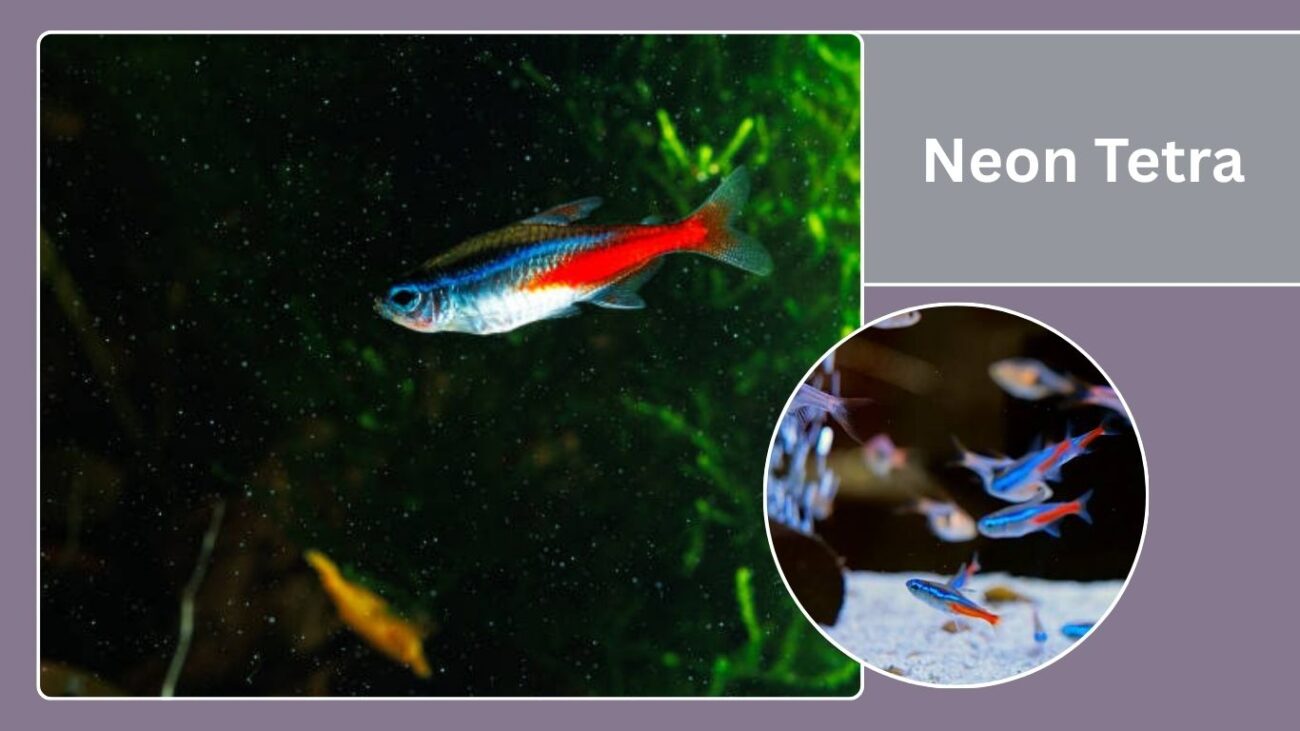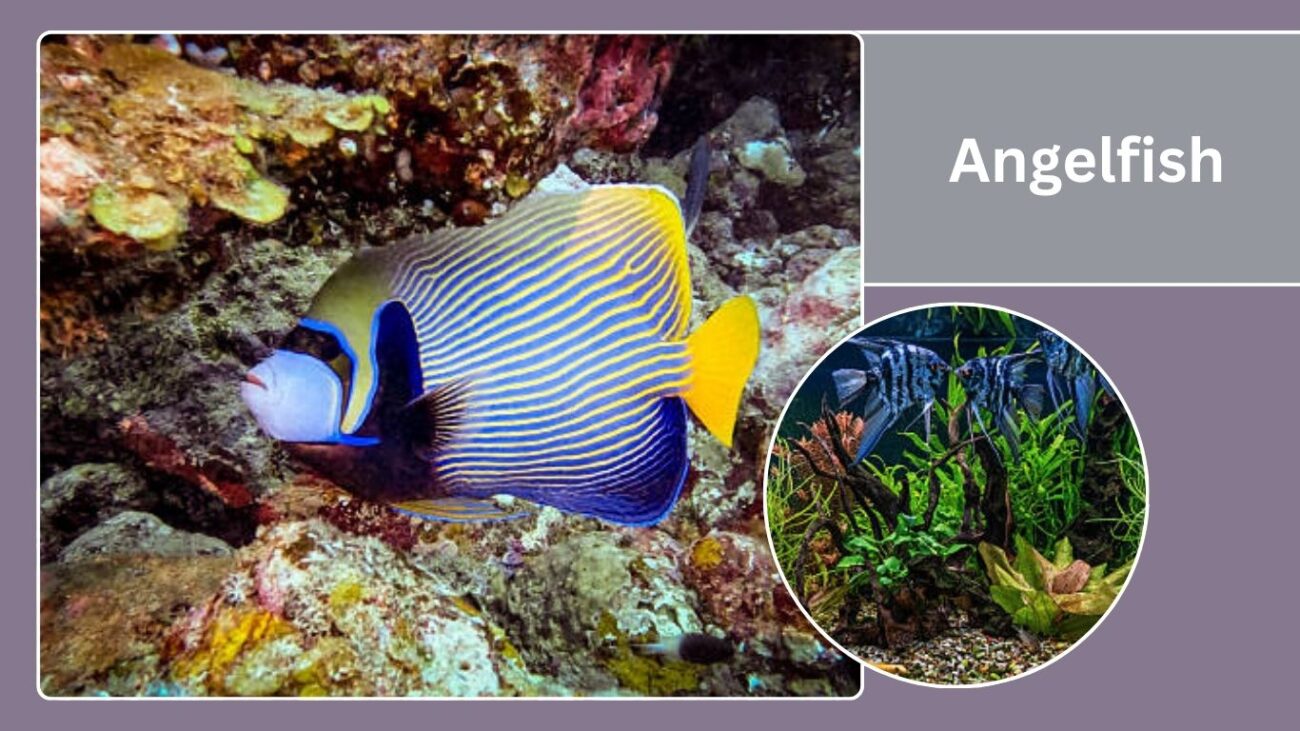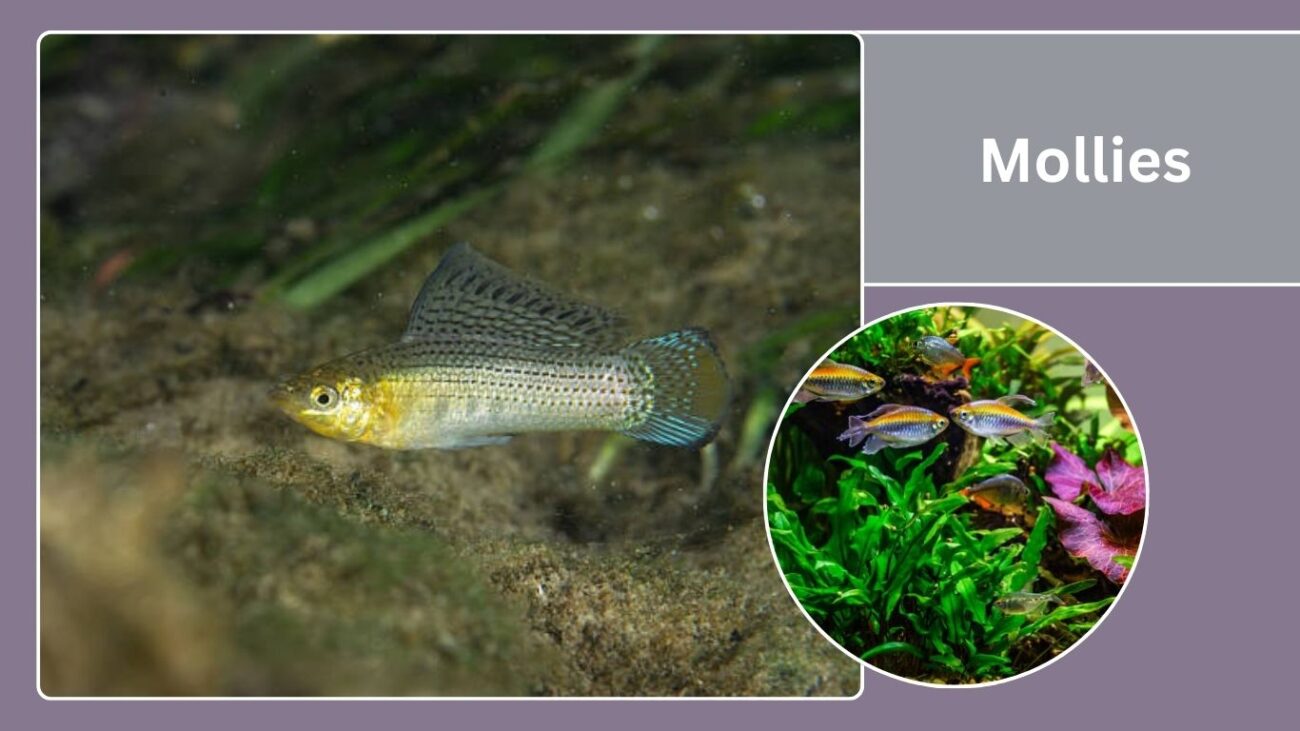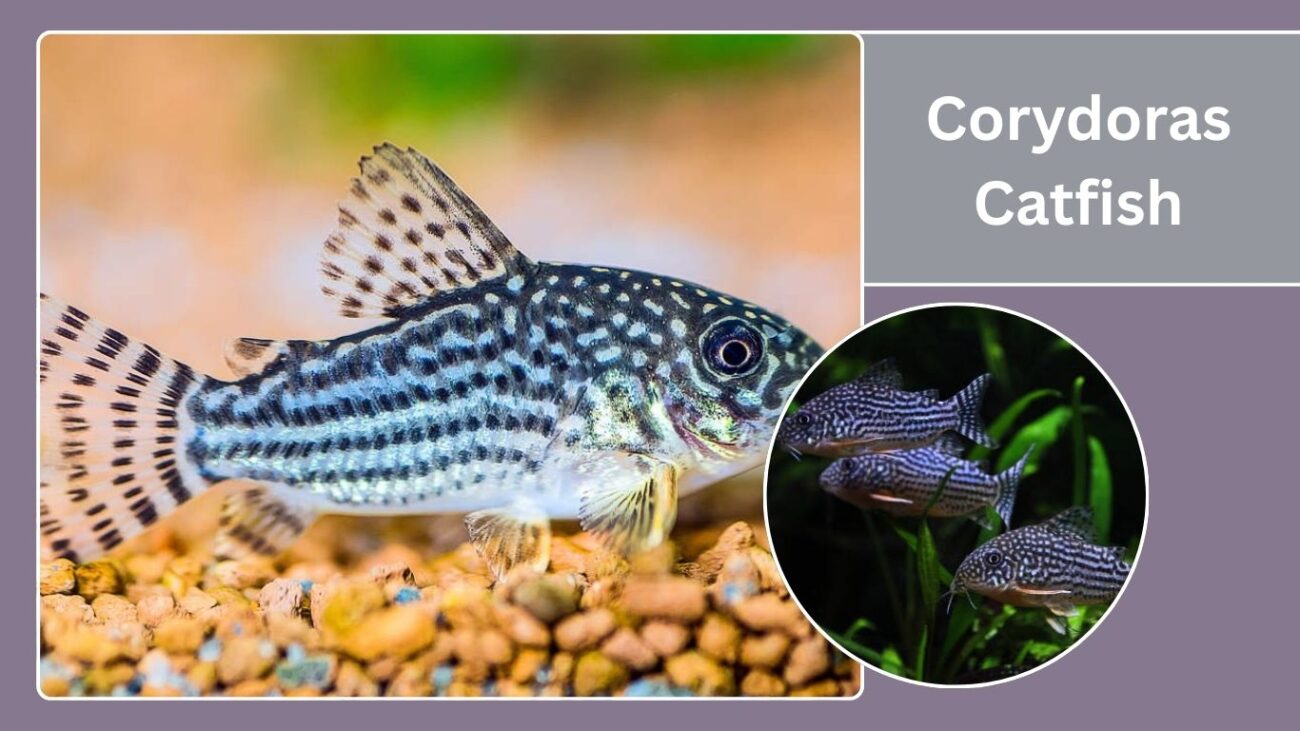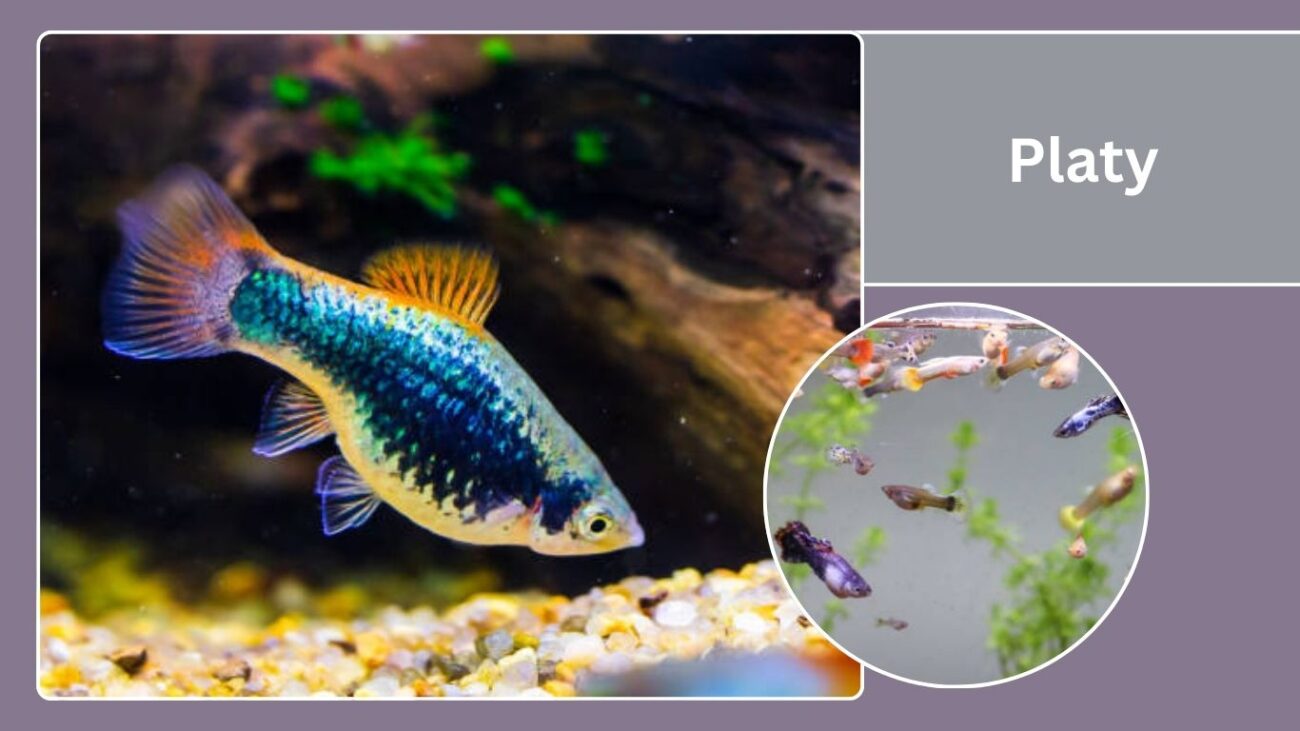Adding fish to a home aquarium not only brings beauty but also creates a calming and lively environment. Freshwater fish are ideal for beginners and experienced aquarists alike, as many species are hardy, colorful, and easy to care for. In this guide, we’ll explore 10 of the most popular freshwater fish, each with unique traits, behaviors, and care needs that make them perfect choices for aquariums.
1. Guppy
Guppies are one of the most iconic freshwater aquarium fish, adored for their dazzling colors, small size, and lively personalities. They are also known as “million fish” because of their incredible breeding rate. Easy to care for and highly adaptable, guppies are ideal for both beginners and advanced aquarists looking to add movement and beauty to their tanks.
Identification
- Size: Typically 1.5–2.5 inches, with males being smaller and more colorful than females
- Colors: Wide range including red, blue, green, yellow, orange, black, and mixed patterns
- Fins: Males have long, flowing tails and ornate fins, while females have shorter, rounder fins
- Body Shape: Males are slender, females are more rounded with a visible gravid spot when pregnant
- Variations: Includes fancy guppies, endless guppies, cobra guppies, and snakeskin guppies
Habitat and Tank Requirements
Guppies thrive in tropical freshwater aquariums with temperatures between 72–82°F and a pH of 6.8–7.8. A 10-gallon tank is suitable for a small group, but larger tanks allow for healthier schools and breeding. They appreciate a well-planted aquarium with floating plants that provide shelter for fry. Filtration should be gentle, as guppies prefer calm waters. Since they are prolific breeders, it’s common to see fry in community tanks if males and females are kept together.
Behavior
These fish are peaceful and highly social, making them excellent community fish. They are active swimmers, usually occupying the middle and top layers of the tank. Males may chase females in displays of courtship, so it’s best to maintain a ratio of one male to two or three females to reduce stress. Guppies often recognize their caretakers and may swim to the front of the tank during feeding times.
Diet
Guppies are omnivorous and require a varied diet to maintain vibrant colors and good health. Their staple diet can include high-quality flakes, micro-pellets, or granules. To supplement, they enjoy live or frozen foods such as brine shrimp, mosquito larvae, bloodworms, and daphnia. Vegetables like blanched spinach or zucchini can also be offered occasionally. A balanced diet enhances breeding success and strengthens their immune system.
2. Neon Tetra
Neon Tetras are small, brightly colored freshwater fish that bring a vibrant glow to aquariums. Their shimmering blue and red stripes make them instantly recognizable and a favorite among aquarists worldwide. They are peaceful, hardy, and perfect for community tanks, especially when kept in schools that show off their natural beauty.
Identification
- Size: About 1.2–1.5 inches long
- Colors: Bright blue horizontal stripe running along the body with a vivid red stripe from mid-body to tail
- Body Shape: Slim, streamlined body with transparent fins
- Lifespan: Typically 5–8 years in a well-maintained aquarium
- Unique Trait: Their colors appear brightest in darker, planted tanks
Habitat and Tank Requirements
Neon Tetras originate from slow-moving streams in South America, particularly the Amazon Basin. They prefer slightly acidic water with a pH of 6.0–7.0 and temperatures between 70–81°F. A minimum 10-gallon tank is required for a small school, though larger tanks are recommended for groups of 10 or more. Live plants, driftwood, and subdued lighting help mimic their natural habitat and make their colors more vivid.
Behavior
These fish are schooling species and should always be kept in groups of at least six, with larger groups making them more confident and active. They are peaceful and highly compatible with other small, non-aggressive fish like guppies, rasboras, and corydoras. Neon Tetras swim actively in the middle layers of the tank, creating a dynamic and colorful display.
Diet
Neon Tetras are omnivores and thrive on a varied diet. Their staple diet can include micro-pellets or high-quality flakes. They also enjoy live or frozen foods such as brine shrimp, daphnia, bloodworms, and tubifex. Feeding them small portions twice a day helps maintain their health and enhances their natural coloration.
3. Betta Fish
Betta Fish, also called Siamese fighting fish, are one of the most stunning freshwater species due to their vibrant colors and long, flowing fins. They are hardy and can live in smaller tanks, making them a popular choice for aquariums and desktop setups. However, they are territorial, especially males, and require special care when it comes to tank mates.
Identification
- Size: Typically 2–3 inches long
- Colors: Wide range including red, blue, green, purple, orange, white, and multicolored varieties
- Fins: Males have extravagant, flowing fins; females have shorter, less ornate fins
- Body Shape: Slender, elongated body with a slightly upturned mouth for surface feeding
- Variations: Includes veil tail, crown tail, halfmoon, delta, and plakat bettas
Habitat and Tank Requirements
Bettas thrive in warm water between 76–82°F with a pH of 6.5–7.5. While they can survive in small bowls, it is recommended to keep them in at least a 5-gallon tank with filtration and a heater for a healthy environment. They are labyrinth fish, meaning they can breathe air from the surface, but clean, oxygenated water is still essential. Aquariums should include plants and hiding spaces, but avoid sharp decorations that can tear their delicate fins.
Behavior
Male bettas are highly territorial and should never be housed together, as they will fight. However, they can coexist with peaceful, non-fin-nipping tank mates such as corydoras, kuhli loaches, or certain snails and shrimp. Bettas are intelligent and curious, often interacting with their owners by following movements outside the tank. They may even learn simple tricks like following a finger.
Diet
Bettas are carnivorous and need a protein-rich diet. High-quality betta pellets should form their staple food, supplemented with live or frozen foods such as brine shrimp, bloodworms, mosquito larvae, and daphnia. Avoid overfeeding, as they are prone to bloating and digestive issues. Offering small meals 1–2 times per day helps maintain their health and keeps their fins and colors vibrant.
4. Zebra Danio
Zebra Danios are hardy, energetic, and beginner-friendly freshwater fish. They are instantly recognizable by their horizontal stripes and are among the most active swimmers in home aquariums. Because of their adaptability and playful nature, they make excellent community fish and add constant movement to tanks.
Identification
- Size: Around 2 inches long
- Colors: Silver or golden body with 5–6 horizontal blue or purple stripes
- Body Shape: Slender, torpedo-shaped with forked tail
- Fins: Transparent or slightly tinted
- Lifespan: Typically 3–5 years, sometimes longer with proper care
Habitat and Tank Requirements
Zebra Danios thrive in cooler waters compared to many tropical fish, tolerating temperatures between 65–77°F with a pH of 6.5–7.5. They are very adaptable and can even be kept in unheated aquariums. A 10-gallon tank is the minimum, but larger tanks allow more space for schooling. They appreciate open swimming areas, but adding plants and decorations gives them places to explore. Their hardy nature makes them an excellent choice for cycling new aquariums.
Behavior
These fish are highly active and thrive when kept in groups of at least five or more. They are schooling fish and display their best behavior in larger groups. Zebra Danios are peaceful, but their fast movements may startle slower tank mates. They often swim in the upper and middle layers of the aquarium, darting around energetically.
Diet
Zebra Danios are omnivorous and not picky eaters. They readily accept flakes, pellets, and freeze-dried foods, but they thrive when given protein-rich supplements such as brine shrimp, bloodworms, and daphnia. A varied diet enhances their colors and supports breeding. They also enjoy grazing on algae and small plant matter.
5. Angelfish
Angelfish are graceful and striking freshwater fish, well-known for their tall, triangular bodies and flowing fins. They add elegance to any aquarium and come in a wide range of color varieties, making them one of the most admired centerpiece fish in community tanks.
Identification
- Size: Grows up to 6 inches long and 8 inches tall
- Colors: Found in silver, gold, black, koi, marble, and zebra patterns
- Body Shape: Disc-like body with elongated dorsal and anal fins
- Fins: Large, triangular fins that give them a majestic look
- Lifespan: Typically 8–10 years in well-maintained aquariums
Habitat and Tank Requirements
Angelfish prefer warm water between 75–82°F with a pH of 6.5–7.5. Due to their tall body shape, they need a tank with adequate height, so a 20-gallon tall tank or larger is recommended. They thrive in aquariums with live plants, driftwood, and gentle filtration. Since they can grow large, a spacious tank ensures comfort and reduces aggression.
Behavior
Generally peaceful, angelfish can become territorial, especially during breeding. They do well in community aquariums with other medium-sized, calm fish but may eat very small species like neon tetras if hungry. They are intelligent and form pair bonds when breeding. During mating, they lay eggs on flat surfaces such as leaves or tank decorations.
Diet
Angelfish are omnivores and require a balanced diet of high-quality flakes or pellets. To promote health and vibrant colors, they should also be fed live or frozen foods like brine shrimp, bloodworms, and daphnia. Supplementing with vegetables such as spirulina flakes or blanched spinach helps with digestion and overall health.
6. Mollies
Mollies are hardy, adaptable, and active freshwater fish that are highly popular among aquarists. They are livebearers, which means they give birth to free-swimming fry instead of laying eggs, making them fascinating for breeding enthusiasts. With their wide variety of colors and fin shapes, mollies bring both beauty and liveliness to community aquariums.
Identification
- Size: Usually 3–4.5 inches depending on the type
- Colors: Solid black, gold, silver, white, dalmatian, orange, or mixed patterns
- Body Shape: Oval, slightly elongated with variations like sailfin or lyretail
- Males vs Females: Males are slimmer with pointed anal fins, females are larger and rounder
- Lifespan: 3–5 years under good care
Habitat and Tank Requirements
Mollies prefer warm, slightly alkaline water with a temperature range of 72–82°F and a pH of 7.5–8.5. A 20-gallon tank is ideal, especially if you plan on keeping multiple mollies, since they are social and breed often. They adapt well to planted aquariums and even tolerate slightly brackish water. Ensure enough space for swimming and provide hiding spots for fry to survive if breeding occurs.
Behavior
Mollies are peaceful, social fish that enjoy being in groups. However, males may chase females during breeding, so keeping a ratio of 1 male to 2–3 females helps reduce stress. They are active swimmers and interact well with other community fish like tetras, guppies, and corydoras. Their playful, curious behavior makes them a joy to watch.
Diet
Being omnivores, mollies require both plant and protein-based foods. They thrive on high-quality flakes, algae wafers, and spirulina-based foods. For added nutrition, offer live or frozen foods such as brine shrimp, bloodworms, and daphnia. They also enjoy blanched vegetables like zucchini or spinach, which keep them healthy and help with digestion.
7. Swordtail
Swordtails are lively and colorful freshwater fish, named for the elongated lower part of the male’s tail fin that resembles a sword. They are closely related to mollies and platies, making them just as hardy and beginner-friendly. With their striking colors and active swimming, swordtails are a favorite choice for community aquariums.
Identification
- Size: Typically 4–5 inches long
- Colors: Found in red, orange, green, black, pineapple, and spotted varieties
- Body Shape: Streamlined body with the male’s extended “sword” tail fin
- Males vs Females: Males are slimmer with the sword-shaped tail, females are larger and lack the sword
- Lifespan: Around 3–5 years with proper care
Habitat and Tank Requirements
Swordtails thrive in water temperatures between 72–82°F and a pH of 7.0–8.4. A 20-gallon tank or larger is recommended, as they are active swimmers and need space. They enjoy planted aquariums with both open swimming areas and hiding spots. Since they are livebearers like mollies, they can reproduce quickly, so be prepared for fry if males and females are housed together.
Behavior
Swordtails are peaceful and get along well with other community fish. However, males can sometimes be territorial with one another, especially in smaller tanks. Keeping more females than males helps balance aggression. They are highly active, often swimming in the middle and top sections of the tank, bringing lots of movement and color.
Diet
Swordtails are omnivorous and need a mixed diet to stay healthy. Their staple diet can include flakes, pellets, and algae-based foods, while live or frozen foods like brine shrimp, bloodworms, and daphnia add protein. They also benefit from occasional vegetables such as blanched spinach or zucchini, which support digestion and vibrant coloration.
8. Gourami
Gouramis are elegant freshwater fish known for their calm nature, unique shape, and ability to breathe air directly using a labyrinth organ. They come in several varieties and colors, ranging from dwarf to larger species, making them suitable for different aquarium sizes. Their graceful swimming and gentle personalities make them a favorite choice for community aquariums.
Identification
- Size: Depending on species, ranges from 2 inches (dwarf gourami) up to 6 inches (pearl, blue, or gold gourami)
- Colors: Found in shades of blue, red, gold, pearl, and even multi-colored patterns
- Body Shape: Oval, laterally compressed body with long, thread-like ventral fins
- Unique Trait: Labyrinth organ allows them to gulp air at the surface
- Lifespan: Typically 4–6 years with good care
Habitat and Tank Requirements
Gouramis prefer warm water with temperatures between 74–82°F and a pH of 6.5–7.5. A 20-gallon tank is suitable for dwarf varieties, while larger species require more space. They enjoy aquariums with dense plants, gentle filtration, and calm water flow. Floating plants are especially appreciated, as they provide cover and mimic their natural habitats.
Behavior
Most gouramis are peaceful, but males can sometimes be territorial, especially when breeding. They swim slowly and gracefully, often exploring every part of the tank. Dwarf gouramis, pearl gouramis, and honey gouramis are especially suitable for community aquariums with other non-aggressive species. However, aggressive varieties like the three-spot or kissing gourami may need careful tank mate selection.
Diet
Gouramis are omnivores and require a balanced diet. They readily accept flakes, pellets, and freeze-dried foods, but they thrive with live or frozen foods like bloodworms, brine shrimp, and daphnia. Vegetables such as spirulina flakes or blanched peas can also be offered for variety and improved digestion.
9. Corydoras Catfish
Corydoras Catfish, often called “Corys,” are small, bottom-dwelling freshwater fish loved for their peaceful temperament and helpful cleaning habits. They constantly sift through the substrate in search of food, keeping the tank tidy while adding activity to the bottom level of aquariums.
Identification
- Size: Usually 2–3 inches long, depending on the species
- Colors: Range from silver, bronze, peppered, albino, to spotted varieties
- Body Shape: Rounded body with a flat underside and downward-facing mouth
- Unique Trait: Possess barbels (whisker-like organs) for detecting food in the substrate
- Lifespan: Typically 5–7 years, sometimes up to 10 with excellent care
Habitat and Tank Requirements
Corydoras thrive in water temperatures between 72–78°F with a pH of 6.5–7.8. A 20-gallon tank is ideal for a small group, as they are social and should be kept in schools of at least 5–6. A soft substrate like sand or smooth gravel is important to protect their sensitive barbels. They appreciate tanks with live plants, hiding spots, and gentle filtration, along with plenty of bottom space for foraging.
Behavior
Corys are peaceful, social fish that rarely show aggression. They prefer to stay in groups and often swim or rest together at the bottom of the aquarium. While they are active scavengers, they are not algae eaters and should not be relied upon as the only cleaners in the tank. Their playful, cooperative behavior makes them favorites in community aquariums.
Diet
Corydoras are omnivores and require a varied diet. They enjoy sinking pellets, algae wafers, and bottom feeder tablets, which ensure food reaches them before mid-level fish eat it all. They also benefit from live or frozen foods such as bloodworms, brine shrimp, and daphnia. Regular feeding helps maintain their energy and supports healthy group behavior.
10. Platy
Platies are small, colorful, and easy-to-care-for freshwater fish that are perfect for beginner aquarists. They are peaceful, active, and available in a wide range of vibrant colors, making them one of the most popular choices for community tanks. Like guppies and mollies, platies are livebearers, which means they often produce fry in aquariums.
Identification
- Size: Typically 2–3 inches long
- Colors: Found in red, orange, yellow, blue, black, and patterned varieties such as tuxedo or wagtail
- Body Shape: Short, stocky body with a fan-shaped tail
- Males vs Females: Males are slimmer with a pointed anal fin (gonopodium), while females are rounder and larger
- Lifespan: About 3–5 years in good conditions
Habitat and Tank Requirements
Platies thrive in water temperatures between 70–78°F with a pH of 7.0–8.3. They are highly adaptable and suitable for tanks as small as 10 gallons, though larger tanks are better for groups. They enjoy planted aquariums with open swimming spaces. Since they are livebearers, it’s common to see baby fish if both sexes are present, so having hiding spots for fry is useful.
Behavior
Platies are peaceful, social fish that do best in groups of at least 4–6. They are active swimmers and spend most of their time in the middle and upper levels of the tank. They coexist well with other calm community fish like tetras, guppies, mollies, and corydoras. Males may occasionally chase females, but they are generally non-aggressive.
Diet
Platies are omnivorous and thrive on a mixed diet. Their staple foods include flakes, pellets, and algae-based foods, while live or frozen foods such as brine shrimp, daphnia, and bloodworms provide extra protein. They also benefit from plant matter like blanched spinach or zucchini. A varied diet keeps their colors bright and supports breeding.

